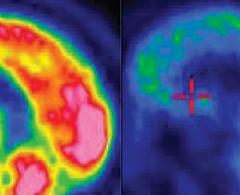
This Article From Issue
March-April 2014
Volume 102, Number 2
Page 84
DOI: 10.1511/2014.107.84
To the Editors:
Henry Petroski’s “In Memory of the Offprint” (January–February, Engineering) was a trip down memory lane. Many of us older scientists remember the days of requesting or receiving requests for reprints, another term for offprints. To make requests, I purchased post cards from the post office and had them printed so that I didn’t have to lick stamps (stamps had to be licked in those days; no peel and stick). All I had to do was write in the article titles and address the card. But, as nostalgic as this is, some very positive things have occurred as a result of our evolution to electronic publishing.
From the 1970s until 2010, I acquired a library of reprints of important articles in my field. These were diligently cataloged, first on 3-by-5-inch index cards and then later in an electronic bibliographic database. The reprints themselves, or in the more recent years, printed copies of downloaded articles, were carefully filed in boxes on book shelves. In 2010 I had 60 linear feet of boxes containing reprints.
In 2010 I had a revelation: I no longer had room to expand my collection of reprints. With this revelation and the realization that I was downloading articles and printing them out, I am now paperless and use personal bibliographic software, which captures the citation data from articles to automatically populate my database. The software saves even more time when I am writing, because it electronically compiles my literature-cited section.
Besides saving postage, paper, and space, I save a lot of time because I no longer have to write requests, make bibliographic entries, and file the material.
To date, my bibliographic database contains about 30,000 items that I can now electronically search whenever I need to find an article, no matter where I am. What a saving.
I know this is by no means novel to younger professionals, but it is a real wow factor for someone who started when computers still required large rooms and when slide rules were hanging from the belt of every scientist.
Roger Applegate
Antioch, Tennessee
To the Editors:
Henry J. Petroski (“In Memory of the Offprint,” Engineering, January–February) and Katie L. Burke (“A Safety Net for Scientific Data,” Spotlight , January–February) make valid and overlapping cases concerning data retrieval and access. A further problem is that the changes they describe can limit access to information if one is not (or is no longer) in an academic post.
In the past I could access journals and abstract materials (the latter such as the International Abstracts of Food Science and Technology) as hard copy in the library of the university where I was employed until retirement. Increasingly these are held in the virtual world, and the need to protect access for those currently studying and working at the University mean that access for other people has to be curtailed.
I also am aware that electronic searches are only as good as my ability to construct search terms, whereas working with printed materials could lead me into novel concepts. Thus, I find that my work (or hobby) in editing textbooks can be obstructed, and I do not know how anyone without even my restricted access to electronic sources can research a topic in detail. I hasten to add that at a personal level I have good and constructive relationships with former colleagues and the library’s staff, but this cannot be abused by me, so I do feel rather restricted, particularly if I want to foray outside my normal comfort zone.
Brian J. B. Wood
Lenzie, Glasgow, Scotland
Editor’s note:
The online data archives discussed in “A Safety Net for Scientific Data” are open to the public, so access would be limited only if a person did not have a computer or Internet.

American Scientist Comments and Discussion
To discuss our articles or comment on them, please share them and tag American Scientist on social media platforms. Here are links to our profiles on Twitter, Facebook, and LinkedIn.
If we re-share your post, we will moderate comments/discussion following our comments policy.